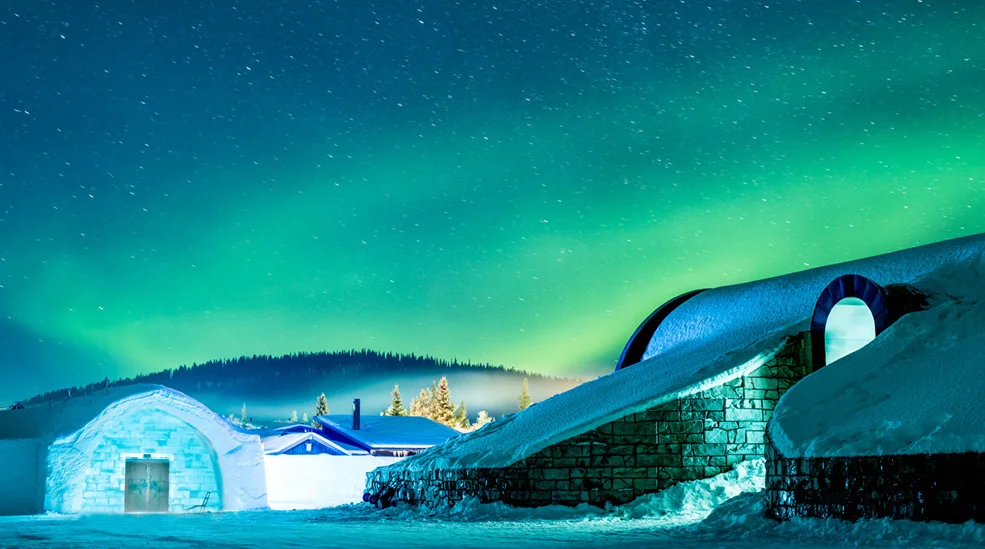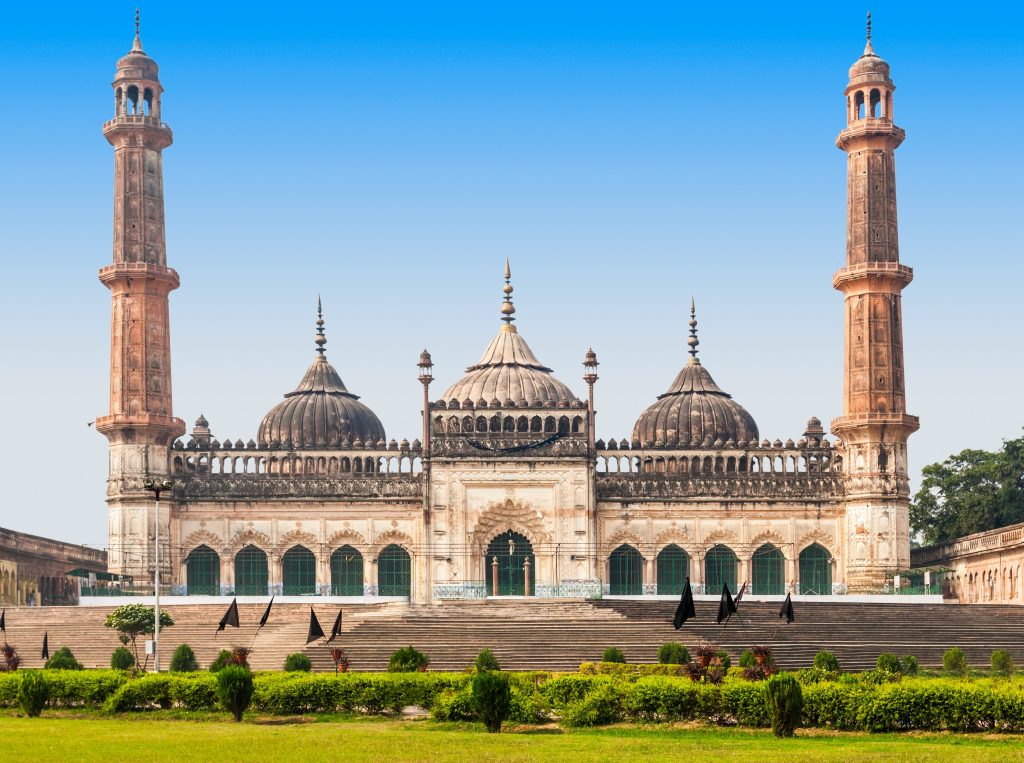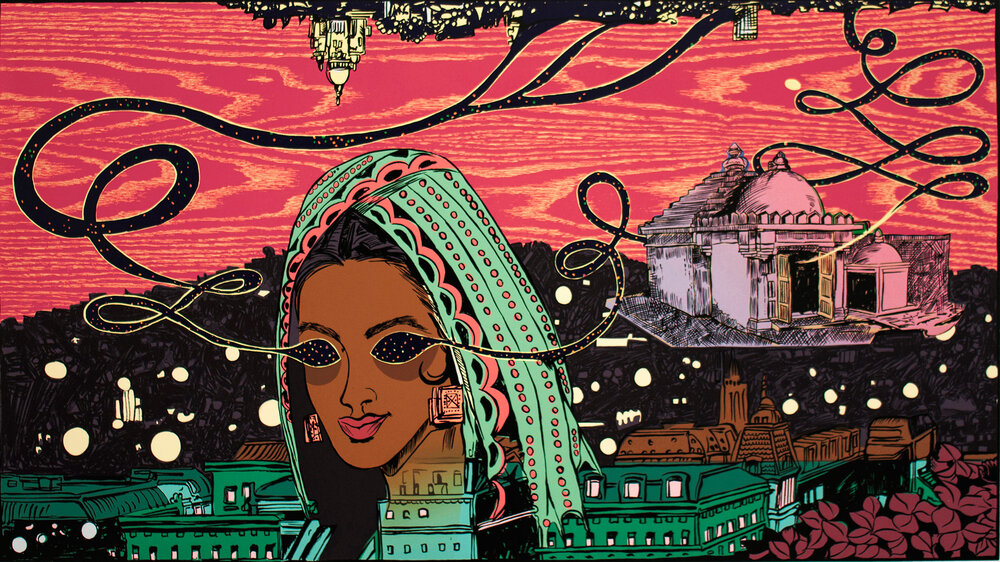I remember watching Disney’s Frozen not too long ago. When Elsa magically erected an ice palace to serve as her new home; encasing herself in the newfound liberation yet solidarity, I nearly jumped out of my seat. It made me wonder, whether it will ever be possible for us hot-blooded humans to ever experience such an architectural and engineering marvel. Turns out, it’s not only possible, but an ice hotel has been operating since 1990.
The Icehotel, Sweden
The Icehotel as the name suggests is a hotel made completely out of ice, save for the reindeer skins (which serve as bedding) and electrical equipment (to beat the heat). Even the glasses at the bar are made of ice. They call it, booze, ‘in the rocks’. An annual phenomenon, the Icehotel functions from December to April, the coldest and the snowiest months in Sweden. Every year, the Icehotel commissions artists from around the world to build suites for the hotel and execute their artistic visions. Ice blocks are transported from the frozen Torne River and carved with intricate details to represent the vision of the artist.
In addition to the luxurious hotel and bar, the Icehotel also has a church (ceremony hall) which is run by the local parish, part of the Swedish Church. Despite being a cold territory, the church functions like any other. The church is consecrated annually on the Christmas Day service. During its operation, several couples get married and numerous children are baptized.
Icehotel 2023-2024
The construction of the 34th rendition of Icehotel, known as Icehotel 34 began in mid-November. Applications were invited from around the globe, with the results announced by the end of April. Icehotel 34 included 15 custom suites, a main hall, and a ceremony hall. Let’s take a quick look at these aesthetic art pieces.
‘Oh My Goddess’ – Ulrika Tallving (Sweden) and Giovanna Martinez (Italy)
The room celebrates IxCacao, the Mayan goddess of cocoa. The ‘Ix’ translates to ‘little one’ and represents the feminine energy. Hence, ‘IxCacao’ translates to cocoa woman. She is the goddess of abundance and fertility in Aztec culture. Tallving and Martinez described the suite as a tribute to the often neglected, abused, colonised, and exploited cocoa farmers.
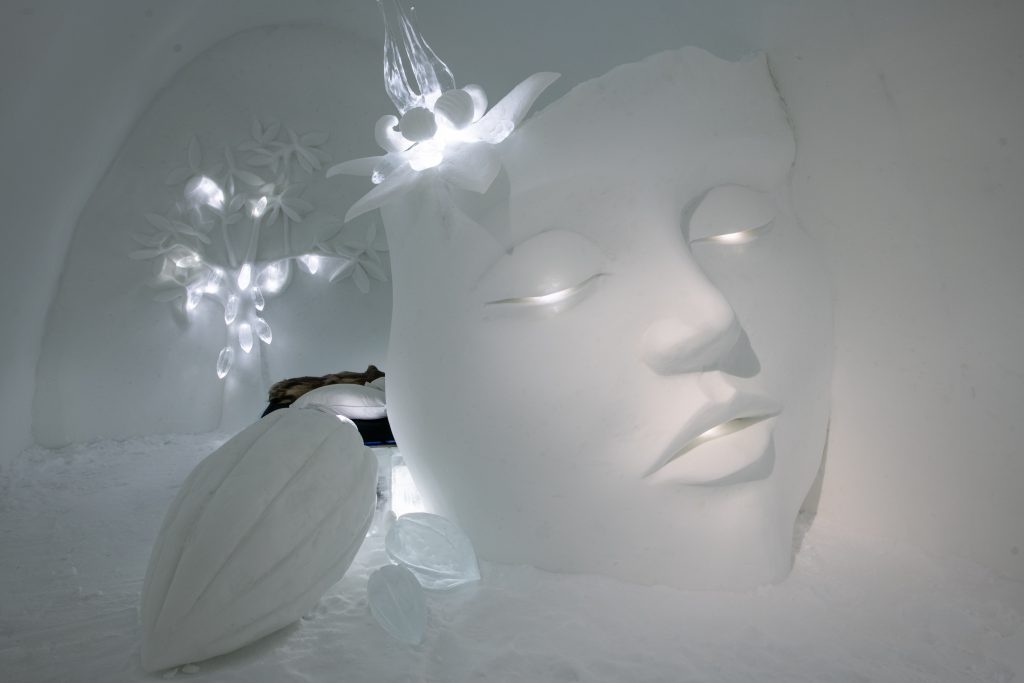
‘Torne River Anomaly’ – Jack Prescott and Mathew Foster (United Kingdom)
In 2011, expeditions by the Ocean Explorer Team found a bizarre formation at the bed of the Baltic Sea. They termed it the ‘Baltic Sea Anomaly.’ The Torne River flows into the Baltic Sea. It is said that the original expedition ship was deserted and the mysterious extra-terrestrial forces pushed the vessel upstream, where it crashed in Jukkasjärvi. The suite expresses these decade-long stories with alien hieroglyphs carved into walls and sculptures that grace the room.
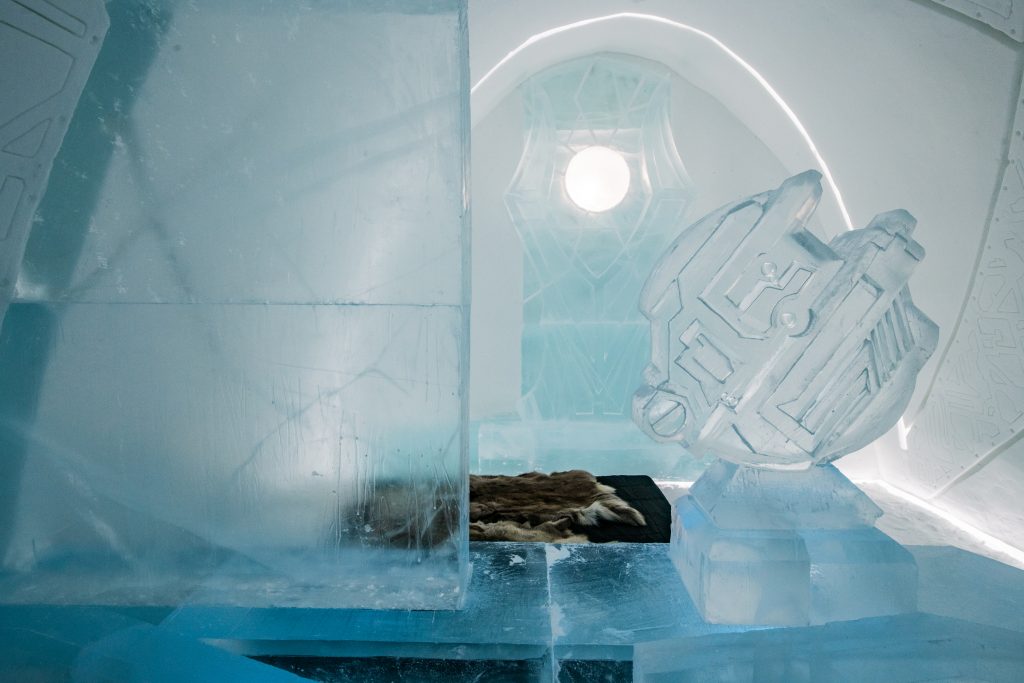
‘Inception’ – Nicolas Triboulot (France)
This suite serves an allegorical purpose. It narrates the formation of the world. From darkness, chaos, and thunder rose the world that we know now. Carved into the wall is the phrase ‘Here everything began’ signifying the birth of the cosmos, time, and space. Upon entering the silent suite, one is perplexed by the streaks of thunder running down the walls and the roof.
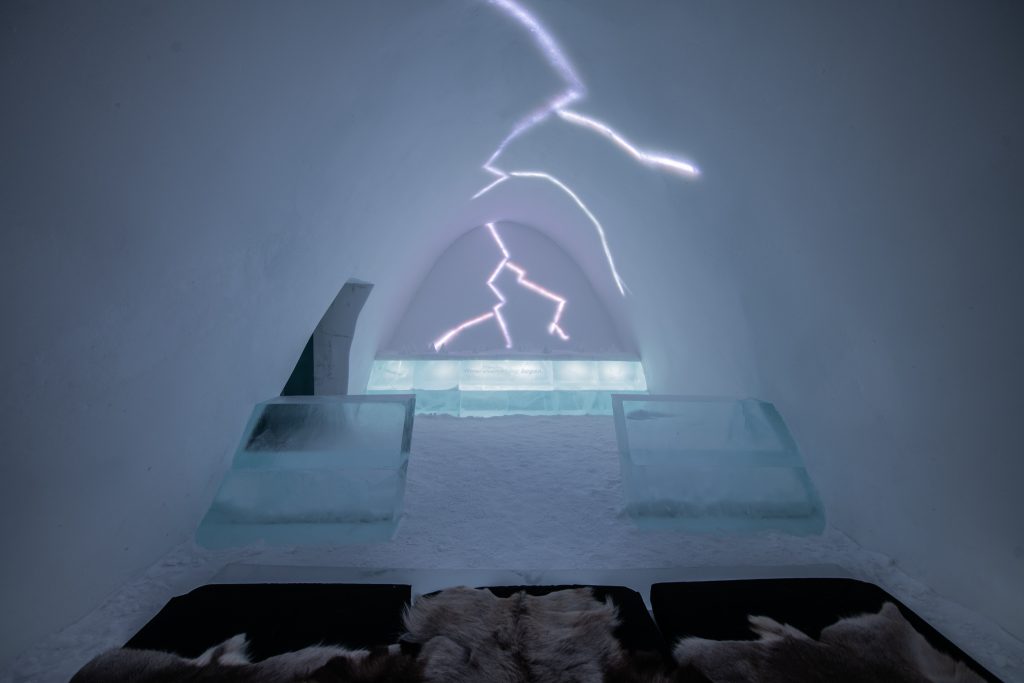
‘Morning Song’ – Natsuki Saito and Shingo Saito (Japan)
This suite is a fairy tale come to life. The room weaves the mythical narratives of Tove Jansson and Astrid Lindgren to create a native tale of its own. The pair pay homage to the Swedish lakes and forests, where fairies, trolls, and nymphs live and breathe in harmony.
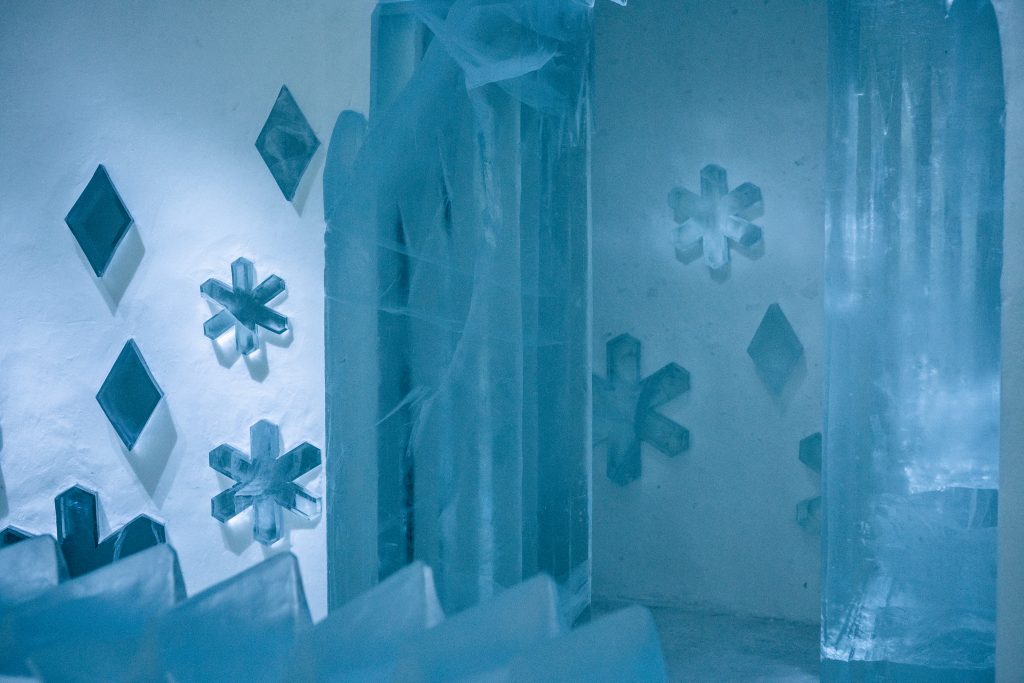
‘Katt & Råtta’ – Tjåsa Gusfors (Sweden) and Hanneke Supply (Sweden)
Also known as ‘Frozen Moment’, the room has a voyeuristic aspect. The two sculptors which transfix the occupant in their place are those of a cat, with bright yellow eyes and a rat holding a block of cheese. The sculptors look at each other as if contemplating the next move. Will the cat chase the rats before they make a move? The question persists.
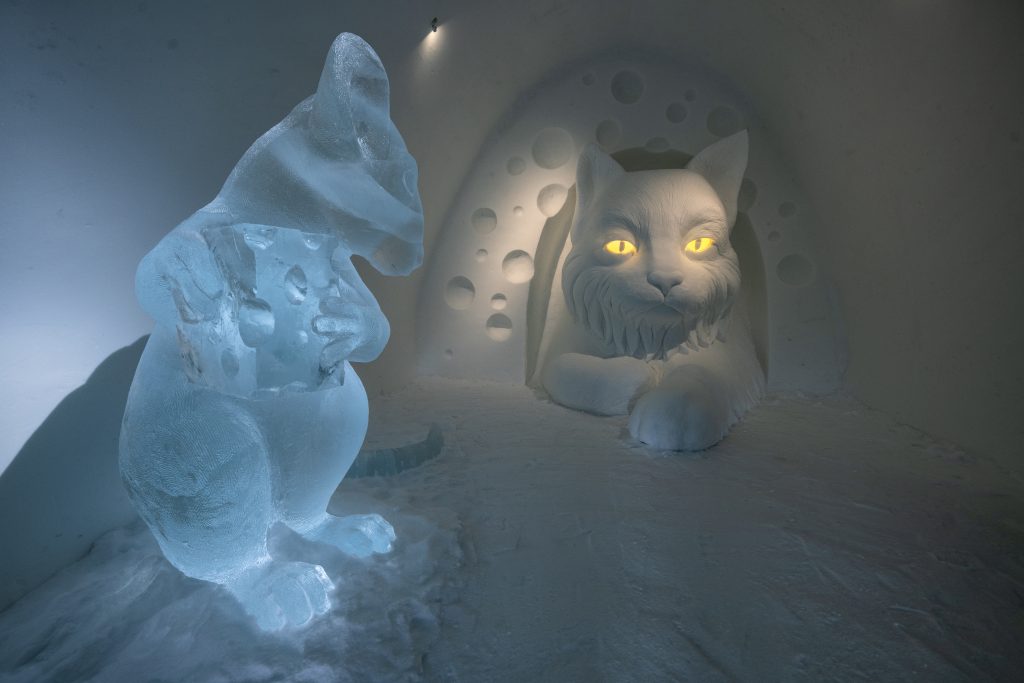
‘Eternal Flow’ – Maxime van Besien (Belgium)
With this suite, Besien has encapsulated the grandeur and shape-shifting nature of the Torne River. The suite is dynamic, with an eclectic mix of solid ice and fluid river, combined into one. It signifies the past and present, which engender the uncertain future.
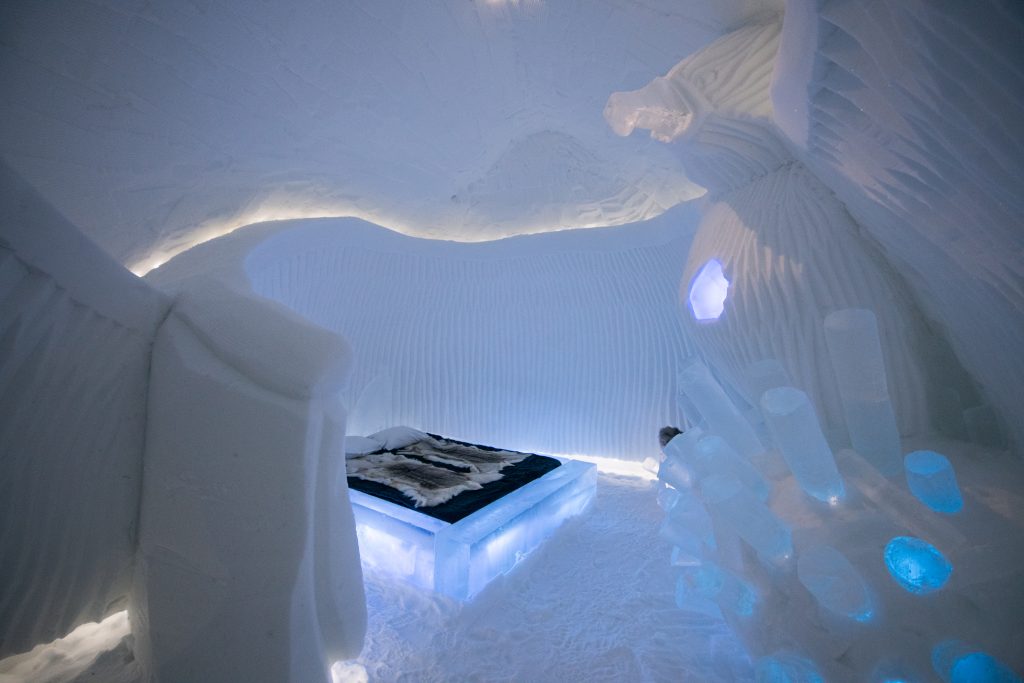
‘Nebula’s Child’ – Edmund Chan and TaiTien Tan (Singapore)
Inspired by the ‘Pillars of Creation’; a group of interstellar molecular clouds which are ever expanding and ever eroding. The room interrogates the occupant on the delicate yet essential balance of creation and destruction. The room is lit with a violet hue seeping through the cracked walls. The bed is placed in a position which ensures that the viewer never stops gazing, imagining, and pondering.
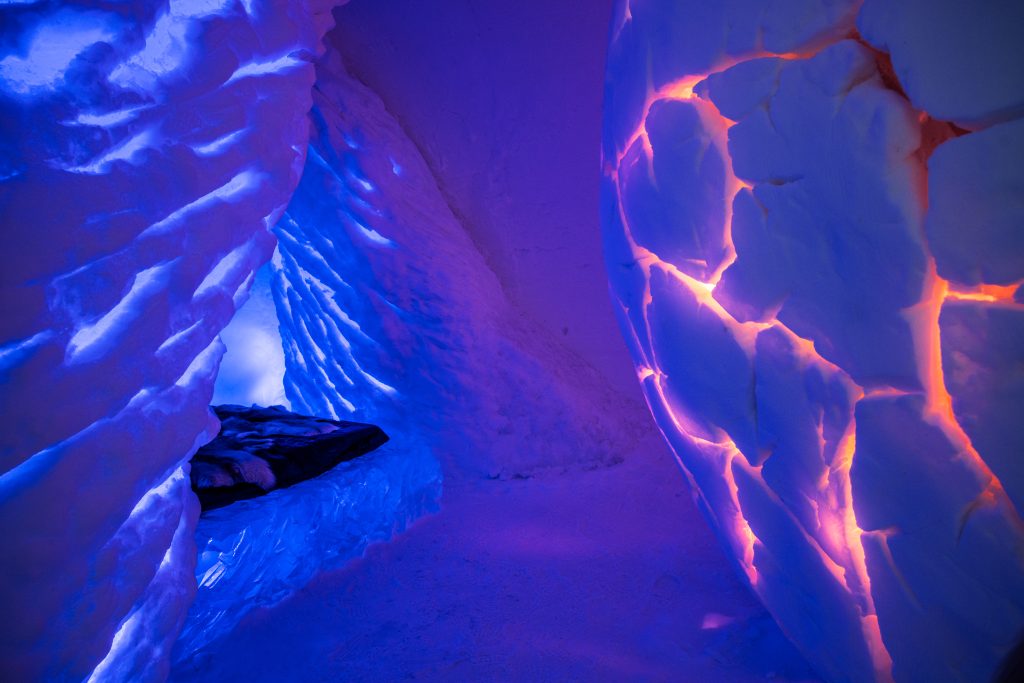
‘šiella’ – Laila Kolostyak and Elisabeth Kristensen (Norway)
A šiella is a talisman of the Sami people. The talisman held magical herbs, mouldy bread, and secret potions, which were thought to protect the Norwegian children from illnesses and unfortunate fates. When a child is born, the šiella is hung from the cradle, overlooking the child. As they grow old, they become protective amulets. The suit focuses on the mystic nature of the šiella. Hung from the bed and ever present in the room, the occupant is protected from the ill fates they may encounter.
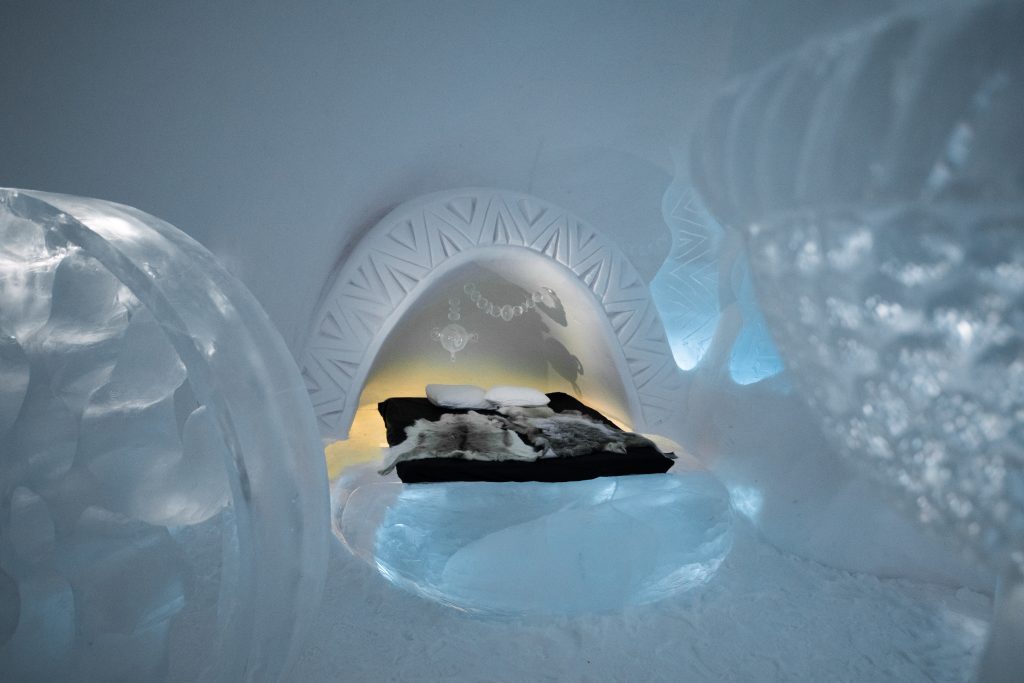
‘Beaver Lodge’ – Dawn Detarando and Brian McArthur (Canada)
The national animal of Canada, the beaver is a hard-working animal. The beavers live in wetlands, creating strong dams out of sticks, reeds, and mud. It prevents drought, floods, and stream erosion; forming slow-moving ponds in the process of sustaining biodiversity. The Beaver Lodge is an ode to these animals. Walking into the den, the resident can expect a pair of beavers working hard; chewing on twigs and logs.
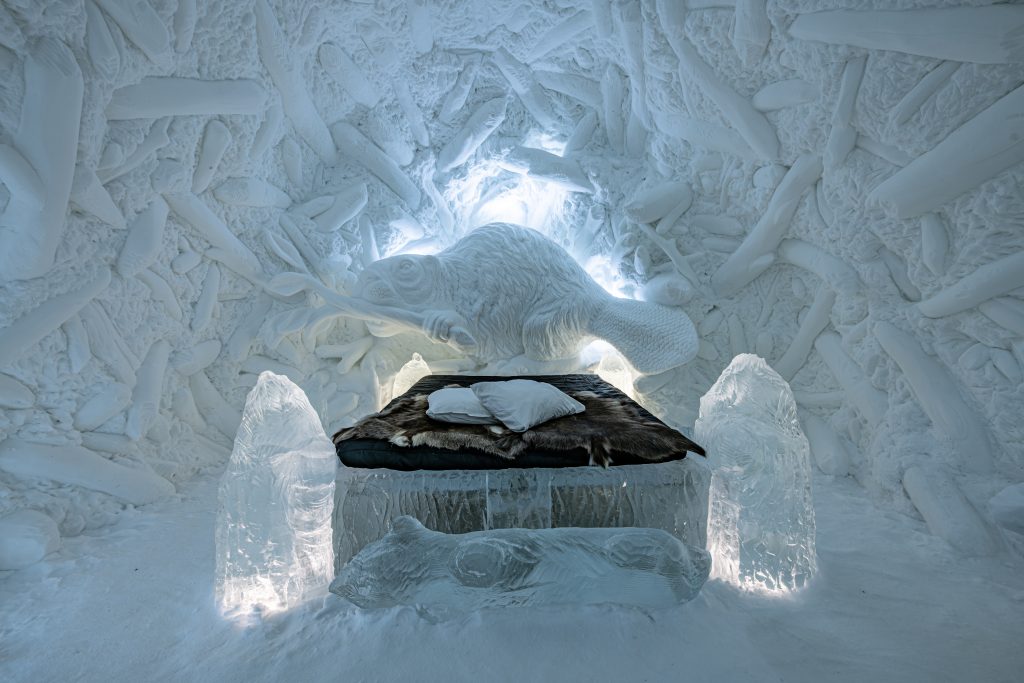
‘Obscura’ – Lukas Petko (Slovakia)
The suite is a surrealistic illusionary idea that aims to test the audience’s understanding of space while producing an immersive experience that makes the distinction between imagination and reality difficult to discern. By using techniques including lighting, item scaling, the horizontal plane’s slope, and a warped checkered pattern to create a fake perspective, the room appears much larger than it is when viewed from a particular spot.
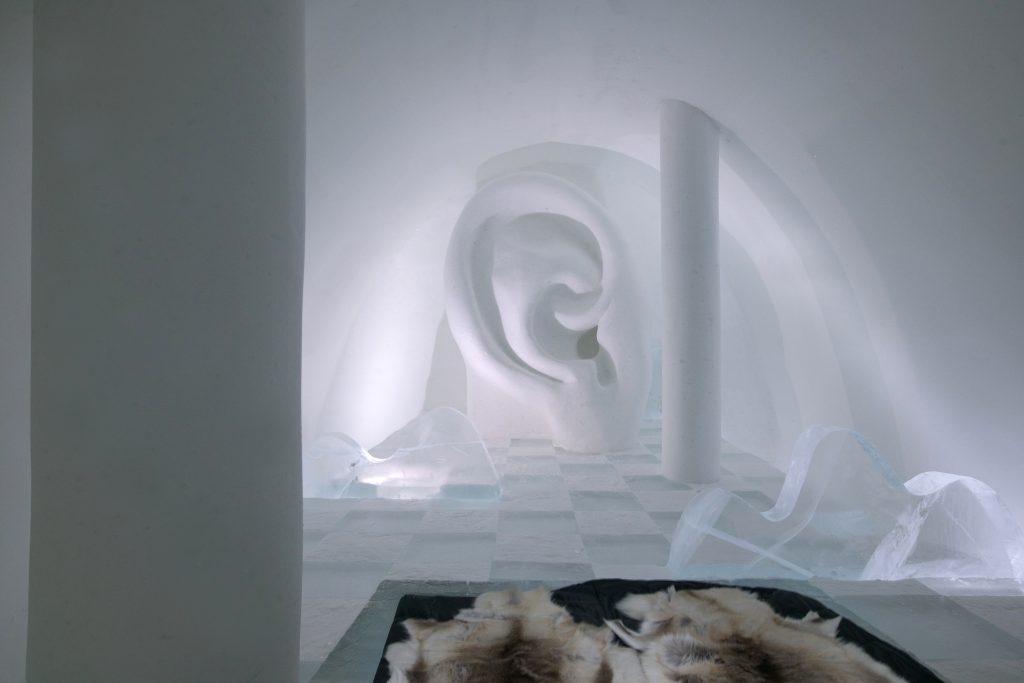
‘Don’t Get Up’ – Wilfred Stijger and Edith van de Wetering (Netherlands)
The suite plays with the idea of space. The bed is born out of a giant woman, whose head holds the ceiling reminiscent of Atlas holding the world. Laying down, the viewer’s eyes meet the sculpture creating a sense of intimacy and awe.
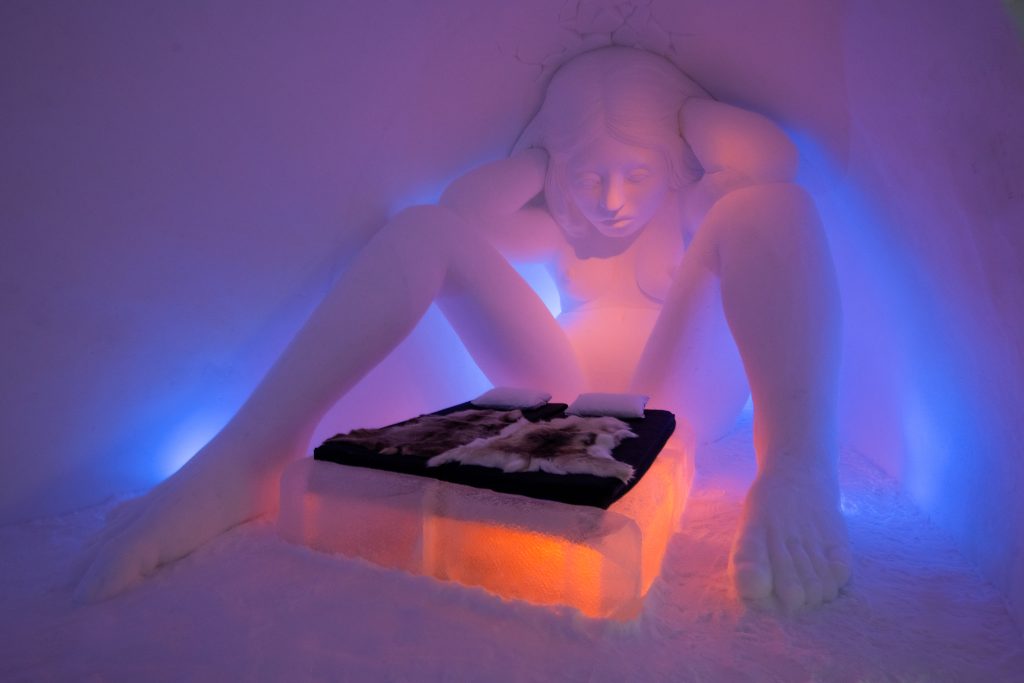
‘Minus 10’ – Luc Voisin and Mathieu Brison (France)
The suite was designed to deceive the viewers. Each piece of furniture and decoration is tilted by 10 degrees from the horizon. As the occupant assimilates into this experimental room, they constantly feel as if the room is tilting and moving. This visceral rollercoaster constantly keeps the occupant’s senses in check. The laws of physics even though very true seem to dissipate in this room.
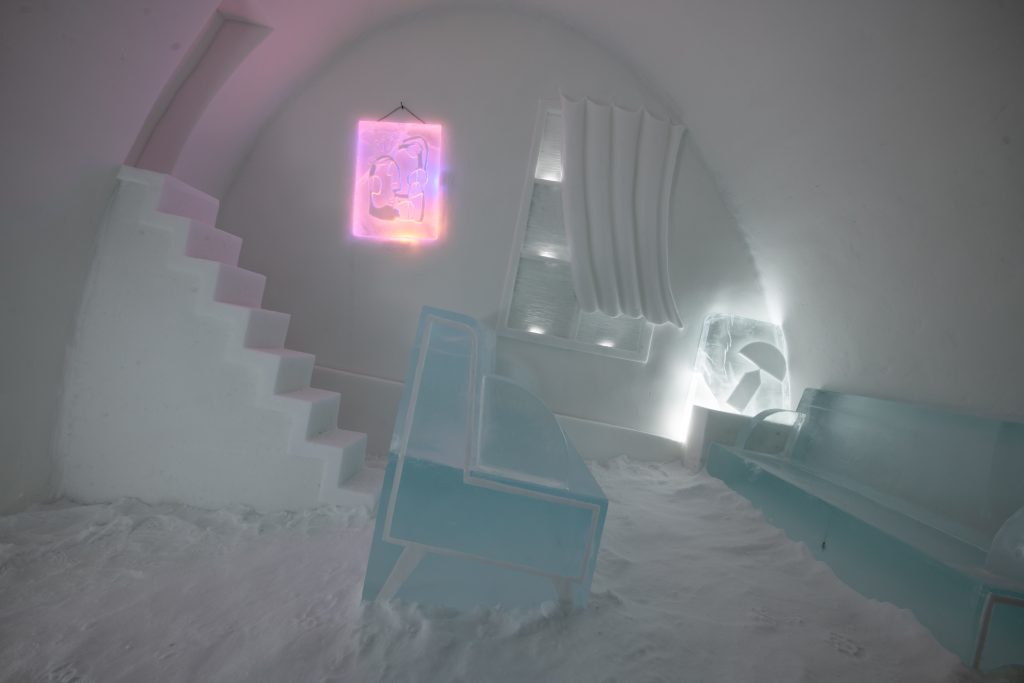
‘Dream With A Thorn’ – Monica Popescu (Romania) and Emmylou Varon (Sweden)
The suite is a juxtaposition of polar ideas. The sculptures are created in the form of the primitive paper-cutting technique and evoke the imagery of the hot arid desert. The numerous cacti are 2 dimensional, with their flat surface exhibiting their thorny textures. The cacti represent the growth of life despite lacking resources. Similar to the snow, deserts lack significant water sources hence, it also acts as a plea for the ongoing water conservation movements.
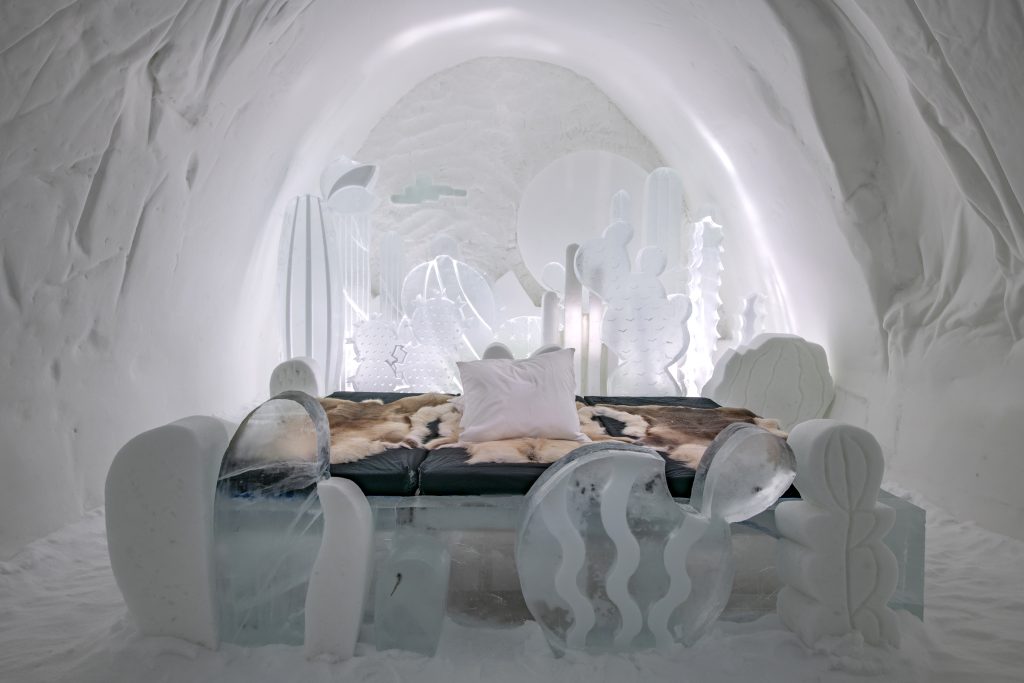
‘Light Collectors’ – Lisa Lindqvist and Kate Munro (United Kingdom)
The suite is another to take inspiration from fairytales. The sculptures narrate the tale of imaginary creatures – part human, part animal. It appeals to the Narnian vision, with satyrs roaming amok. The room is inspired by the winter solstice and the pagan rituals associated with it.
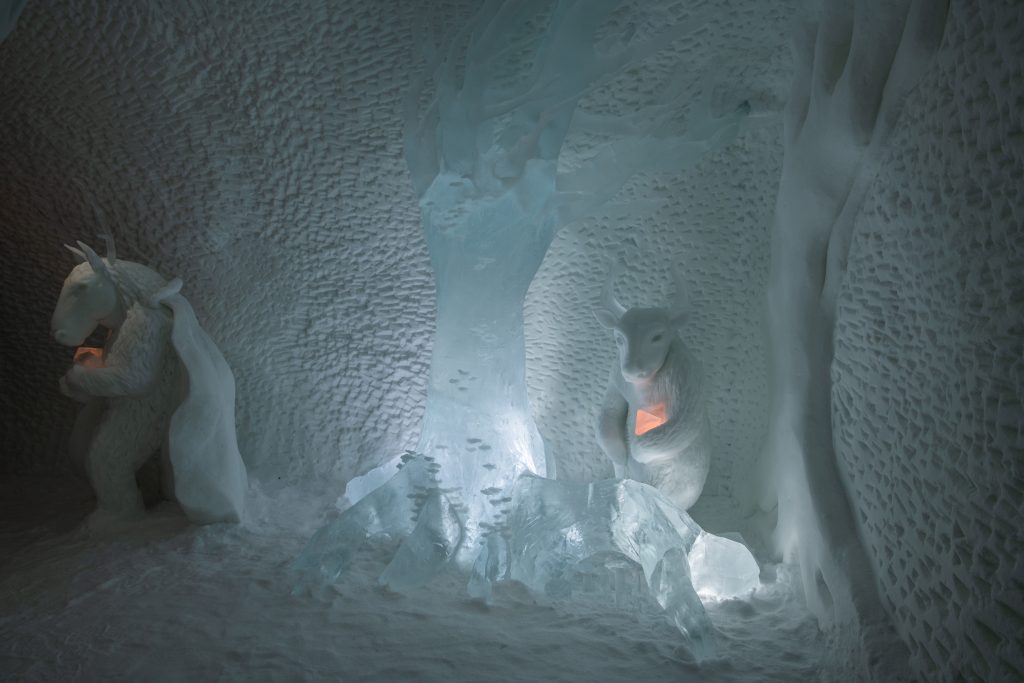
‘Sea Inside’ – Kristina Möckel and Sebastian Scheller (Germany)
We’ve often heard of the myth that one can hear the sea through a seashell. The room plays around with the myth, paying tribute to the myriad mollusc species. The bed is a large clam shell, akin to Sandro Botticelli’s Birth of Venus. The shells are spread throughout the room, reminding us of the sea.
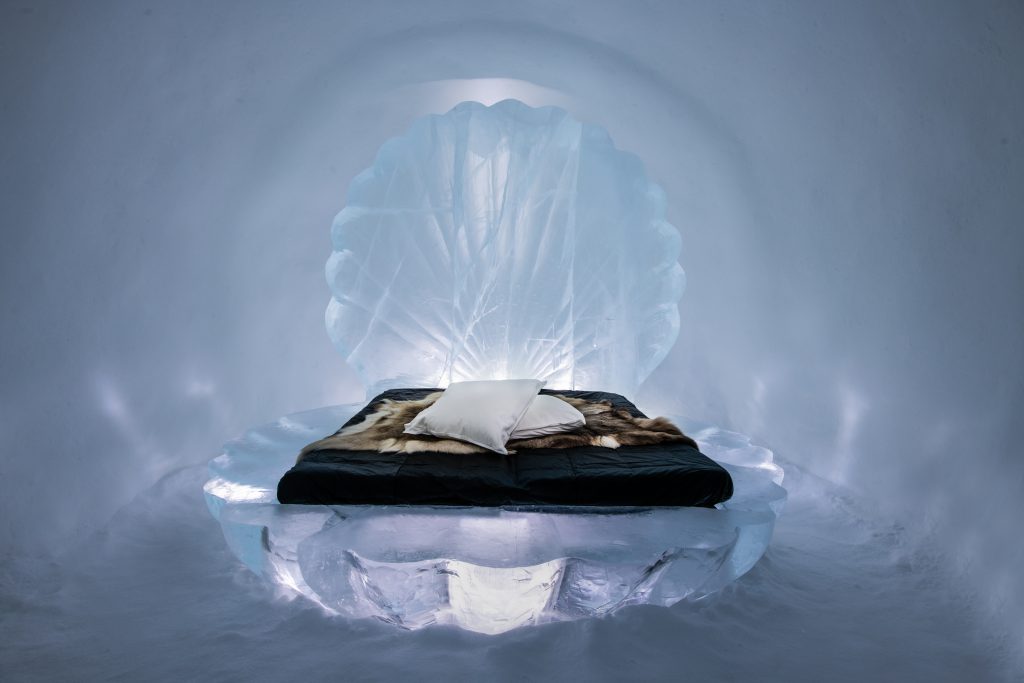
‘LattICE’ – Kendo Hamaguchi and Taku Ohuchi (Japan)
The main hall of the Icehotel, ‘LattICE’ is made by the Japanese carpenting technique of Aigaki. This method fits the various parts together by making convex and concave incisions into the wood rather than using nails or other metal fasteners. It resembles an enormous three-dimensional puzzle. Based on these principles, LattICE is constructed using ice cubes in place of wood. The ice cubes’ lengths vary parametrically to form curves with straight lines that alter the way light and shadows flow through the ice cubes that overlap.
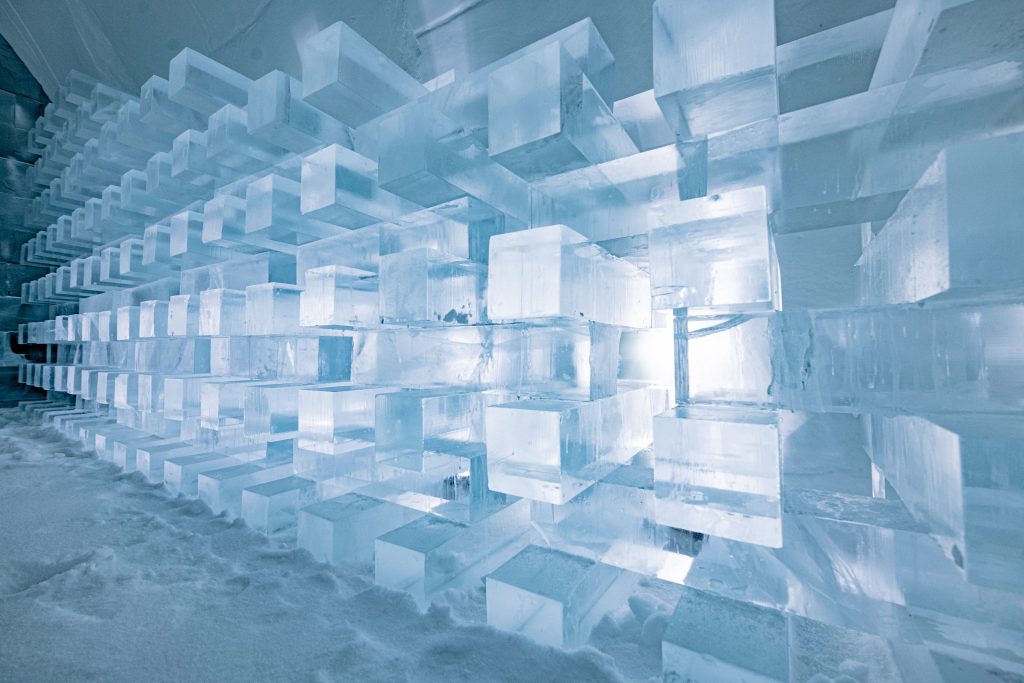
‘Slava’ – Tomasz Czajkowski and Grzegorz Olczak (Poland)
The ceremony hall, ‘Slava’ is inspired by the rich Ukrainian culture. The folk designs, notably the cross-stitching patterns on traditional Ukrainian garments, served as the inspiration for the ice columns in the front of the chamber. The ornate patterns carved into the hall walls represent the tenacity and unwavering power of nature: the rebirth of life and strength returning every spring. The backrests of the chairs feature images of flowers and animals, signifying the power of life.
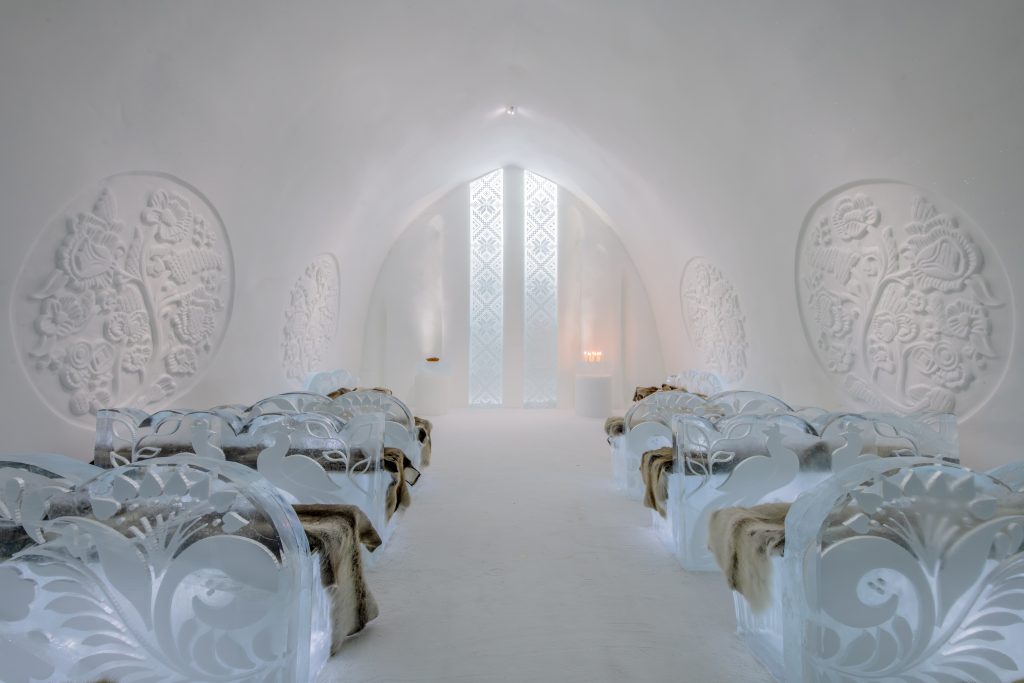
Image Courtesy – Strawberry Hotels
Winter Wonderland: Kangsing Team Builds an Ice Cafe in Ladakh

Hi Ya’ll !!
I love writing about pop culture and all things queer.
Sub Editor at Abir Pothi

